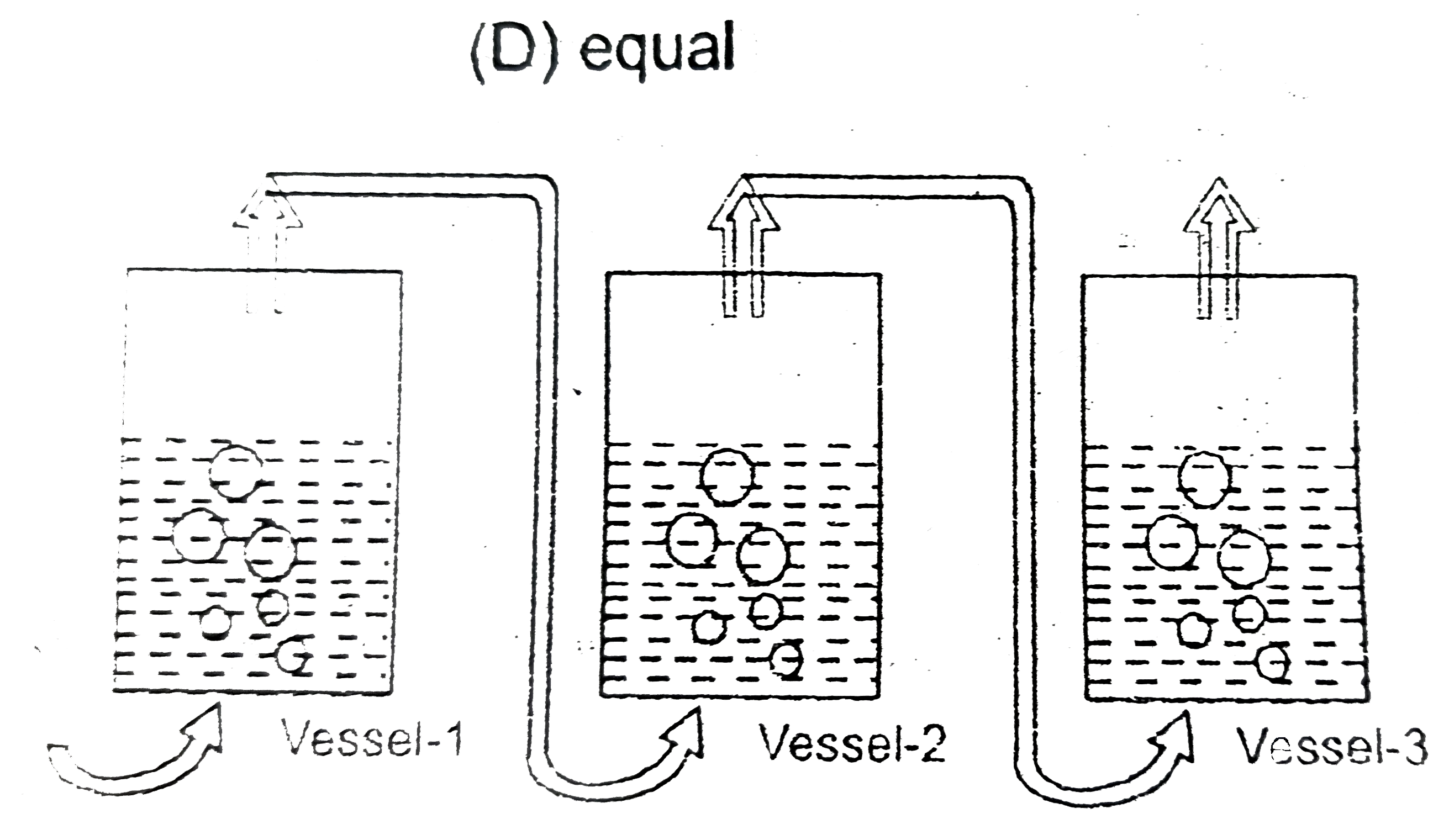Dry air is slowly passed through three solutions of different concentrations, C1,C2 and C3, each containing (non-volatile) NaCl as solute and water as solvent, as shown in the Fig. If the vessel 2 gains weight and the vesel 3 loses weight then:

c1>c2
c1<c2
c1<c3
c2>c3
The correct Answer is:B, D
Step by step video, text & image solution for Dry air is slowly passed through three solutions of different concentrations, C_(1),C_(2) and C_(3), each containing (non-volatile) NaCl as solute and water as solvent, as shown in the Fig. If the vessel 2 gains weight and the vesel 3 loses weight then: by Chemistry experts to help you in doubts & scoring excellent marks in Class 12 exams.
Topper's Solved these Questions
- BOOK - RESONANCECHAPTER - SOLUTIONSEXERCISE - EXERCISE-2(PART-4)4videos
SOLUTIONS
- BOOK - RESONANCECHAPTER - SOLUTIONSEXERCISE - EXERCISE-3(PART-1)14videos
SOLUTIONS
- BOOK - RESONANCECHAPTER - SOLUTIONSEXERCISE - EXERCISE-2(PART-1)25videos
SOLUTIONS
- BOOK - RESONANCECHAPTER - SOLUTION AND COLLIGATIVE PROPERTIESEXERCISE - PHYSICAL CHEMITRY (SOLUTION & COLLIGATIVE PROPERTIES)52videos
SOLUTION AND COLLIGATIVE PROPERTIES
- BOOK - RESONANCECHAPTER - STEREOISOMERISMEXERCISE - EXERCISE (PART III : PRACTICE TEST-2 (IIT-JEE (ADVANCED PATTERN))22videos
STEREOISOMERISM
Similar Questions
Three capacitors C1,C2andC3 are connected to a 6 V battery, as shown in Fig. Find the charges on the three capcitors.
 View Solution
View SolutionIn Ostwald and Walker's appratus, dry air is passed through a solution containing 20 gram of an organic non-volatile solute in 250 ml of water. Then the air was passed through pure water and then through a U-tube containing anhydroous CaCl2. The mass lost in solution is 26 gram and the mass gained in the U-tube is 26.48 gram. Calculate the molecular mass of organic solute.
View Solution
Knowledge Check
- Question 1 - Select One
A dry air is passed through a soution which contains 10 g of a solute dissoved in 90 g of water. Then the same air is passed through pure water. The depression in weight of the solution is by 2.5 g and in weight of pure solvent (i.e. water) is 0.05 g. The molar mass of the solute is :
A25B50C100D180 - Question 2 - Select One
Dry air is passed through a solution containing 10 g of the solute in 90 g of water and then through pure water. The loss in weight of solution is 2.5 g and that of pure solvent is 0.05 g. Calculate the molecular weight of the solute.
A50B180C100D25 - Question 3 - Select One or More
Dry air is passed through a solution and then through its solvent and finally through CaCl2. The ratio of weight loss in the solvent to the weight gain in CaCl2 gives
Arelative lowering of vapour pressureBlowering of vapour pressureCmole fraction of the soluteDmole fraction of the solvent
Dry air was successively passed through a solution of 5g solute in 80g water and then through pure water. The loss in weight of solution was 2.5g and that of pure water was 0.04g. What is mol. wt. of solute ?
View SolutionDry air was passed successively through a solution of 5g of a solute in 180g water and then through pure water. The loss in weight of solutionwas 250g and that of pure solvent 0.04g . The molecular weight of the solute is
View SolutionDry air was passed successively through a solution of 5 gm of a solute in 80 gm of water and then through pure ware. The loss in weight of solution was 2.50 gm and that of pure solvent 0.04 gm. What is the molecular weight of the solute
View SolutionA current of dry air was passed first through a series of bulbs containing a solution of C6H5−NO20 in ethanol of molality 0.725 and then through a series of bulbs containing pure ethanol. (T = 284 K) loss in weight of the solvent bulbs was 0.0685 g. Calculate the loss in weight of the solution bulbs.
View SolutionWhen 25 g of a non-volatile solute is dissolved in 100 g of water, the vapour pressure is lowered by 2.25×10−1 mm, what is the molecular weight of the solute?
View Solution

